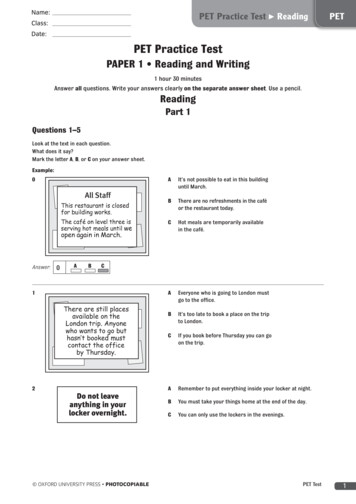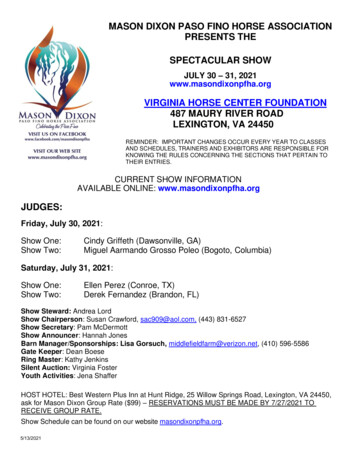
Transcription
SCHOOLACTIVITYBOOK
School ActivitiesMason Dixon: Pet Disastersby Claudia MillsSuggested Activities for TeachersThe FRED Steering Committee has put together a list of possible activities for the classroomteachers. They are intended to offer potential follow-up activities or provoke class discussions onthe chapters read the night before in a brief, fun way and not meant to be a test. They are merelysuggestions and may serve as springboards for individual creativity or preferred teachingstrategies.CHAPTER 1: How did the author describe each of the characters? (Mason, Parents, Brody)What evidence from the text supports that description?Make a character map using the information. (Save for future use)NEW VOCABULARY Mason Dixon Line (p. 5)Sari (p. 6)Capers (p. 6)Dimensions (p. 17)CHAPTER 2: How did the author describe each of the characters? (Nora, Dunk)What evidence from the text supports that description?Continue the character map using the new information.What kinds of friends were Nora and Mason to Brody? How do you know?NEW VOCABULARY Medium (p. 18)Rectangular (p. 16)Vibrant Hues (p. 18)Accomplished (p. 21)Non-contaminated (p. 22)
CHAPTER 3: Imagine what might have happened to Hamster after he escaped from Mason and Brody.Write about Hamster’s adventure after he left/escaped Mason’s house dressed as a pirate.Research: What items would you need to care for a hamster? How are each of these items used for the care of a hamster? How much would it cost to purchase a hamster and all its items? Create a spreadsheet using excel to add up the cost of the itemsNEW VOCABULARY Sprawled (p. 26)Miffed (p. 28)Afghan (p. 29)Bureau (p. 32)Assemble (p. 35)CHAPTER 4: Create your own “lost” poster for Hamster.Using Monet’s Haystack painting – Why would Monet have picked one thing to paint overand over?If you could pick one thing to paint over and over what would you paint?NEW VOCABULARY Contributing (p. 38)Abandoned (p. 42)Smirk (p. 43)Systematically (p. 45)Advantageous (p. 45)Jinxing (p. 46)CHAPTER 5: What was Mason’s challenge with the cat on the couch? What did he do to try to solve hisproblem? Cite evidence from the text to support your answer.Why do you think the author used the sentences “But to prolong the snack, today he mightbe adventurous. He might spread a saltine with peanut butter. He might squirt a Ritz crackerwith some cheese spread from a can.”? (page 56) What was the author telling the readerabout Mason?
NEW VOCABULARY Oppressive (p. 50)Emerged (p. 52)Repulsive (p. 53)Emotional (p. 54)Residence (p. 56)Kiln (p. 57)Commotion (p.60)Quizzical (p. 61)CHAPTER 6: Why was Mason against getting a dog? Were his parents in agreement with him? Explainusing information from the text.How do Mason and Brody differ? Create a Venn diagram using examples the author givesyou.NEW VOCABULARY Piteously (p. 63)Critical (p. 65)Acquaintance (p. 67)Incessantly (p. 67)Facility (p. 73)CHAPTER 7: How did Mason choose pet names?Research: What are the items you would need to care for a dog? How are each of these items used for the care of a dog? How much would it cost to purchase a dog and all its items?NEW VOCABULARY Rapturous (p. 75)Devoured (p. 78)Gait (p. 79)
Substance (p. 81)Reprimanded (p. 83)Gales (p. 85)Smitten (p.85)CHAPTER 8: Add to the character map additional characteristics of Dunk using the information theauthor has given.According to Mason, what was the trouble with having a friend like Brody?NEW VOCABULARY Gouging (p. 88)Nobly (p. 89)Awkwardly (p. 90)Feeble (p. 91)Principle (p. 95)Thrusting (p. 96)Plume (p. 96)CHAPTER 9: Make a Venn diagram comparing Mason’s room to Brody’s room. Which room would yourather live in?Write a story about what you would do on a Saturday if Dog was your pet.Write a good bye letter to Dog from Brody.What does crossing that bridge when you came to it mean?NEW VOCABULARY Crumpled (p. 100)Surrounded (p. 101)Visions (p. 103)Glorious (p. 103)Standard (p. 104)Aglow (p. 104)Retrieving (p. 105)Humongously (p. 106)Incessant (p. 108)Raucous (p. 109)
CHAPTER 10: Research goldfish. How long can they live without food? What kind of food do they need tostay healthy? Find one fact about goldfish that is new to you and share with a friend.What other items besides vegetables could you use to make a print picture? Use some ofthose items to make a print picture.At the end of the chapter Mason thinks that Dog likes him more. Do you agree or disagreewith Mason? List your reasons. Support your answer with examples from the text.NEW VOCABULARY Sandwiched (p. 111)Obligingly (p. 112)Distinguished (p. 112)Piercing (p. 114)Kneaded (p. 119)Pounced (p. 120)Retrieving (p. 105)CHAPTER 11: Sequence Illustrate the process of giving Dog a bath providing captions. Write out the correct procedure of giving a dog a bath.Make a prediction about the art show at the end of camp. What do you think will happen?Using your background knowledge (especially knowing how Mason is beginning to feelabout dog) infer what other reasons besides Dog being made fun of would make Mason notwant Dog to go to the Art Show.NEW VOCABULARY Fascinated (p. 125)Appalled (p. 126)Mimic (p. 127)Bewildered (p. 129)Forlorn (p. 129)Pang (p. 130)Mural (p. 131)
CHAPTER 12: How did Dunk change? Support your answer with examples from the text.How could the fight have been prevented?How is Dunk’s behavior similar to his dog?NEW VOCABULARY Vastly (p. 134)Wreathed (p. 136)Indignity (p. 137)Atrium (p. 138)Savagely (p. 143)Drenched (p. 144)CHAPTER 13: Looking at the character charts made throughout the book, how have the characterschanged from the beginning of the story?Do you think Mason, Brody, Dunk, and Nora could ever be friends?Write the next chapter of the book. It will be shared with the author.NEW VOCABULARY Veterinary (p. 145)Urgent (p. 145)Stricken (p. 145)Conscience (p. 149)
Additional Teacher ActivitiesThe F.R.E.D. Steering Committee has put together a list of possible activities for the classroomteachers. They are intended to offer potential follow-up activities or provoke class discussions onthe chapters read the night before in a brief, fun way and not meant to be a test. They are merelysuggestions and may serve as springboards for individual creativity or preferred teaching strategies.Character Charts: In the beginning of the story, you could create a character-trait chart for each ofthe characters as they appear in the story, i.e. Mason, Brody, Nora, and Dunk. List words thatdescribe each of their personalities, behaviors, preferences, quirks, etc. You can add to the chartsas the story develops.Example: Mason – only child, likes plain clothes, brown socks, simple food, etc.Pro/Con Charts: Compare and contrast the animals as they are introduced throughout the story.There are 4 animals introduced over 13 chapters as Mason’s parents bring different pets into thehome.Example: Hamster – Pro-lives in a cage; Con-runs on the wheel at night and keeps Mason awake.Morning Entry Activities: Create Venn diagrams or T-charts or bar graphs on the board by askingstudents to respond to a question as they enter the classroom in the morning. Unlike some activities,this is not text-dependent and allows all students to participate whether they got a chance to readthe assigned chapter from the night before or not.Example: Venn diagram Question – Do you own a gold fish? (Yes/No circles on the board.) Write yourname in the circle that applies to you.Drawing Activities:Draw your favorite scene from the book and write a caption.Draw your favorite character from descriptions in the book.Draw your dream pet.Draw a storyboard with 10 key scenes from the book.Writing Activities:Journal about how you felt about what happened in the last chapter.Write about how you would have reacted to . . .Imagine you could meet one of the characters in the story and write about who you would choose andwhy or what you might talk about or do together.Think about how the story might have ended in a different way and write about it.Role Playing Activities: Choose a scene from the chapter read the night before and invite students torole play the action.Example: Show us what Mason, Brody, Nora and Dunk did at Art Camp in the last chapter.
GlossaryAbandoned – deserted or given up; forsakenAccomplished – carried out; completedAcquaintance – a person whom you have met but do not know very wellAdvantageous – profitable; favorable; useful; beneficialAfghan – a soft woolen blanket, crocheted or knitted, usually in a geometricpatternAglow - glowingAppalled – to upset someoneAssemble – put togetherAtrium – the entrance to a buildingAutomatically - done unconsciously or from force of habit; mechanicalAwkwardly – not graceful; clumsyBewildered – puzzled; confusedBureau - a chest of drawers, often with a mirror at the top.Capers – onion like vegetableCommotion – noisy or confused activityConscience - inner feeling of what is right and wrongContributing - being partly responsible forCritical – pointing out a mistakeCrumpled – to fall apartDevoured – to eat something up quicklyDimensions - a measurement of length, width, or thicknessDistinguished – to make noticeable or different; set apartDrenched – to wet someone or something completelyEmerged – to rise from or as if from immersionEmotional – having strong feelingsFacility – a buildingFascinated – to attract and strongly hold the interest of someoneFeeble – weakForlorn - sadGait – a way of walking or runningGales – a noisy outburstGlorious – having great beauty or splendor; magnificent
Gouging – a groove or gashHumongously – very largeIncessant - continuing without interruption; ceaseless; unendingIncessantly – never stoppingIndignity – anger caused by something unfair or meanJinxing – to bring bad luck toKiln – an oven or furnace that is used to harden potteryKneaded – to squeeze, press or roll with the handsMason Dixon Line - the boundary between Pennsylvania and Maryland, partlysurveyed by Charles Mason and Jeremiah Dixon between 1763 and 1767,popularly considered before the end of slavery as a line of demarcation betweenfree and slave statesMedium – one of the techniques, materials, or means of expression available toan artistMiffed – to offend or annoyMimic – to imitateMural – a painting that is done on a wall or ceilingNobly – having or showing courage or goodnessNon-contaminated – not polluted; or uncleanObligingly – unaware or unmindfulOppressive – difficult to bear; harshPang – a sudden sharp feelingPiercing – to sound sharply throughPiteously – a feeling of sorrowPlume – an especially large feather used for decorationPounced – to spring or swoop suddenlyPrinciple – a rule of behaviorQuizzical – showing some confusionRapturous – lovingRaucous - rowdy; disorderlyRectangular - having the shape of a rectangleReprimanded – scoldingRepulsive – disgustingResidence – a place in which to liveRetrieving – to bring back
Sandwiched – to insert between two other things tightlySari - a garment worn by Hindu women, consisting of a long piece of cotton orsilk wrapped around the body with one end draped over the head or over oneshoulder.Savagely – wild and fierceSmirk - to smile in an affected, smug, or offensively familiar waySmitten – in love withSprawled - to sit or lie in a relaxed position with the limbs spread out carelesslyor ungracefullyStandard – normal; familiar; usualStricken – ill or misfortuneSubstance – something that has weight and takes up spaceSurrounded – encircle; to extend on all sides ofSystematically – orderly or methodicalThrusting – a forceful pushUrgent – importantVastly – very great area, size or amountVeterinary – animal doctorVibrant Hues – bright colorVisions – a mental pictureWreathed – light up with; covered with
Mason Dixon Line - the boundary between Pennsylvania and Maryland, partly surveyed by Charles Mason and Jeremiah Dixon between 1763 and 1767, popularly considered before the end of slavery as a line of demarcation between free and slave states Medium - one of the techniques, materials, or means of expression available to an artist
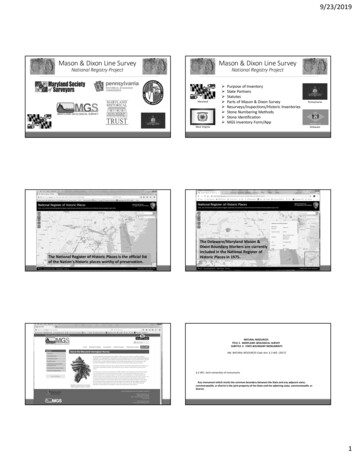
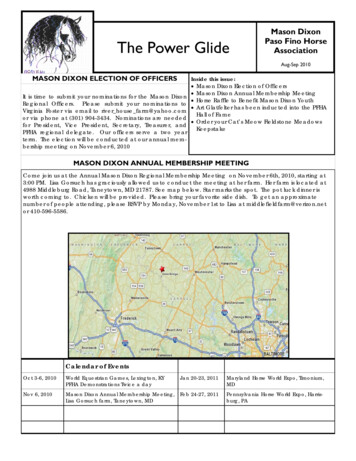
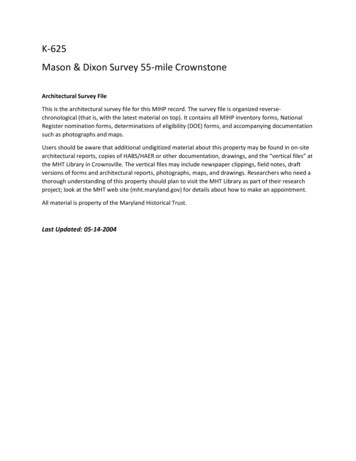
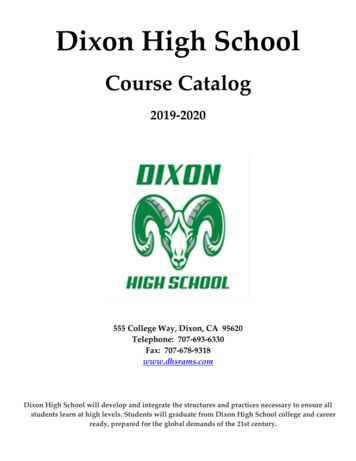
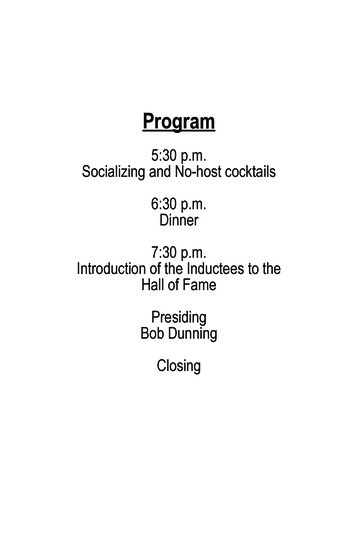
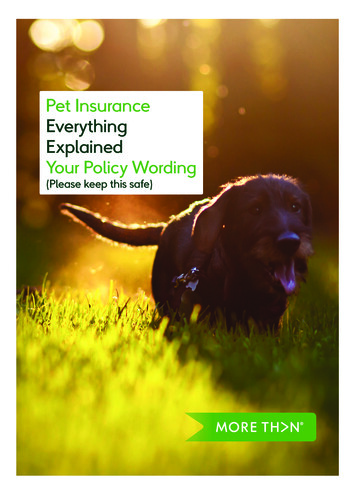
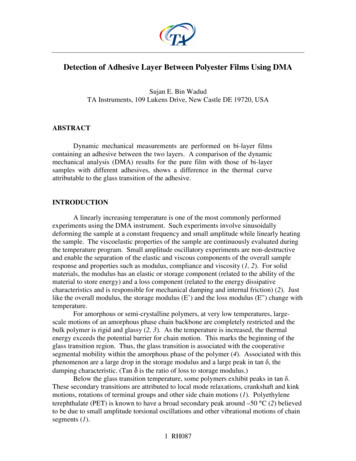
![[403] Vol. Cccxxxviii Over the Counter Sales 3.40 Including G.s.t .](/img/27/22195-gazette-11-may-2022.jpg)
